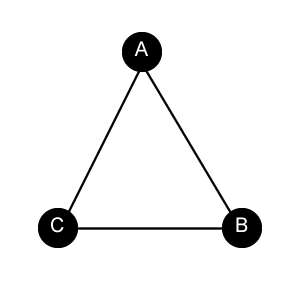The Arcadian Poem
(Not to be confused with “arcadia,” which is a term that evokes utopia.)
If you decide to use the form and you post your pieces, I’d love to see! Tweet me at @ArcadeLinkAutho (no R) or something!
Download a blank structure document for the base form of the poem here.
Download this guide as a more easily readable PDF here.
Form
-Each stanza opens with a couplet (AA).
-Followed by a single line that will be repeated in the next stanza (B1), [I’ll call these “B lines”].
-Followed by an “enclosed tercet” (CDC).
-Then a 2nd single line that will be repeated in the next stanza, which rhymes with the first (B2).
-Then another enclosed tercet, except the rhymes invert with the previous tercet (DCD).
-The second stanza is effectively the same structure, with lines B1 & B2 repeated from the first.
-If the poem is the short 3 stanza form, the third stanza will be B1 and B2. If not, then the next 2 stanzas are structurally the same as the previous two, however, the B lines are new, and repeated between stanzas 3 and 4. Then the 5th stanza is B1 B2 B3 B4. This ends the poem with one or more couplets. “Traditionally” this last stanza has the lines in chronological order, but need not be.
(Note: The symbols * ^ ` ‘ below represent rhymes within the repeated B lines.)
3 stanza form
Stanza 1: A A B1* C D C B2* D C D
Stanza 2: E E B1* C G C B2* F C F
Stanza 3: B1* B2*
5 stanza form
Stanza 1: A A B1* C D C B2* D C D
Stanza 2: E E B1* C G C B2* F C F
Stanza 2: G G B3^ H I H B4^ I H I
Stanza 4: J J B3^ H K H B4^ K H K
Stanza 5: B1* B2* B3^ B4^
These poems can be as long as the writer would like, but the B lines repeat within each pair of stanzas, and the final stanza will always be all the B lines in order. Here is a 9 stanza example.
9 Stanza Form
Stanza 1: A A B1* C D C B2* D C D
Stanza 2: E E B1* C G C B2* F C F (Utilizes almost the whole alphabet for the rhyme scheme!)
Stanza 2: G G B3^ H I H B4^ I H I
Stanza 4: J J B3^ H K H B4^ K H K
Stanza 5: L L B5` M N M B6` N M N
Stanza 6: O O B5` P Q P B6` Q P Q
Stanza 7: R R B7’ S T S B8’ T S T
Stanza 8: U U B7’ V W V B8’ W V W
Stanza 9: B1* B2* B3^ B4^ B5` B6` B7’ B8’
More Notes on Form:
-B line pairs should rhyme, but outside of pairs they don’t need to. For instance B1 and B2 should rhyme, but they don’t need to rhyme with B3. But B3 should rhyme with B4 as a pair.
-The repeated lines do not need to be repeated verbatim, but they do need to rhyme and at least repeat ideas.
-No specific meter required.
Alternate Forms
The Broken Arcadian moves the first half of the final stanza to the beginning of the poem, and leaves the last half at the end. (An Inverted Broken Arcadian would move the last half of the final stanza to the beginning of the poem instead).
The Collapsed Arcadian is an Arcadian poem where the final stanza combines ideas from all of the B lines into fewer rhyming couplets (for further details see * below), or rhyming couplets and one triplet (for further details see ^ below) to end the poem.
The Crushed Arcadian is any Arcadian that doesn’t include the last 3 lines in the stanza form.
What normally would be:
A A B1 C D C B2 D C D
becomes
A A B1 C D C B2
This can also sometimes add in a rhyme for D. Both of these are valid Crushed Arcadians.
A A B1 C D C D B2
The Doubled Arcadian, (note that it is “doubled,” not “double”), places the final stanza both at the beginning and the end of the poem. Notably, this cannot be paired with the Broken or Inverted Arcadian forms.
The Extended Arcadian is any Arcadian poem with 7 or more stanzas.
The Inverted Arcadian moves what would be the final stanza to the beginning of the poem.
All of these forms can be combined. For instance a Crushed Extended Arcadian, would be 7 or more stanzas, where each stanza drops the last 3 lines. A Crushed Extended Inverted Arcadian would be the same but would also move the final stanza to the beginning of the poem. Each addition incorporates the rules of the form. The list of these forms is always alphabetical, and ends with “Arcadian.” Eg. Broken Collapsed Crushed Doubled Extended Inverted Arcadian.
Further Details on Collapsed Arcadians
* If there are an even number of stanza pairs, there will only be couplets. For instance 4 stanza pairs, or 8 stanzas will, in the original form, result in a final 9th stanza of 4 couplets:
B1 B2 B3 B4 B5 B6 B7 B8
This is reduced down to 4 lines, when combining 2 ideas in each line, resulting in two couplets:
Couplet 1: Line 1: B1-2
Line 2: B3-4
Couplet 2: Line 1: B5-6
Line 2: B7-8
^ If there are an odd number of stanza pairs, this will result in an odd number of lines, which means there must be a triplet. In its original form 7 stanza pairs, or 14 stanzas will result in a final 15th stanza of 7 couplets:
B1 B2 B3 B4 B5 B6 B7 B8 B9 B10 B11 B2 B13 B14
But in this form it would look like:
Couplet 1: Line 1: B1-2
Line 2: B3-4
Couplet 2: Line 1: B5-6
Line 2: B7-8
Triplet: Line 1: B9-10
Line 2: B11-12
Line 3: B13-14
Note: The triplet could be the first three lines of the stanza, or the middle three lines, or the last three lines. Anything goes!
Content
I’m no gatekeeper, and I think any form should be used how anybody would like to use it. However, this form was inspired by polyamory, and the original poem is about polyamory, as such non-monogamy is a relevant idea to include in the form.
The form opens in a couplet, representing individual relationships. Stick with me here.
Not to get preachy or anything, but ALL relationships are made up of individual relationships. A lot of people think about polyamory as 3 people in a relationship together… and that’s a thing, for sure. We call that a triad and it’s one fairly small part of what polyamory is. But it isn’t just one relationship, it’s made of 3 unique relationships. The same goes for 3 close friends!
(To be clear, these are not the most common relationships in non-monogamy, and the frequent triad in media is a gross misrepresentation.)

TRIAD
Relationship 1: Person A + Person B
Relationship 2: Person B + Person C
Relationship 3: The relationship of all three.
This gets more complicated when you add more people to a confined segment of a polycule. Next would be a Quad. But these are rare–not often naturally occurring in the wild. A Quad may be 4 people, but is made up of 10 unique relationships!

QUAD
Relationship 1: Person A + Person B
Relationship 2: Person A + Person C
Relationship 3: Person A + Person D
Relationship 4: Person B + Person C
Relationship 5: Person B + Person D
Relationship 6: Person C + Person D
Relationship 7: Person A + Person B + Person C
Relationship 8: Person A + Person B + Person D
Relationship 9: Person B + Person C + Person D
Relationship 10: The relationship of all four together.
The poem structure is intended to evoke a mixture of calm, chaos, & relationships in polyamory.
-It opens with a couplet representing the individual relationship, or even the common pre-existing couple that decides to open up their relationship.
-The B lines sort of interrupt the flow of the poem, and are intended to represent emotional revelations, or even exciting new events and people that seem to come out of nowhere. Those things that interrupt your regular flow of life.
-The second B line in a stanza breaks six lines into two pairs of three. The lines would otherwise have a rhyme scheme of CDCDCD, a fairly common one. But this surprise B line changes things, and we find ourselves in a rhyme scheme of CDC B DCD. This is a somewhat clunky way of representing the drastic change from a single relationship (CD), to something that feels totally different, but in reality isn’t all that different when you examine it closely.
-The poem ends with couplets, representing the fact that everything resolves into individual relationships. Those couplets made of all the new surprises, the B lines, throughout the poem.
There is a comfort in simple rhymes and individual relationships, but it is exciting to meet new people and also mix things up creatively. This is why there are so many alternate forms!
This is a poem that I wrote a few years back that inspired this original form. It wasn’t always exactly this form, but I’ve since revised it to be an Arcadian Poem. In the next image after this I mess with this poem a bit to show the alternate forms, but this first one is the official final poem.


